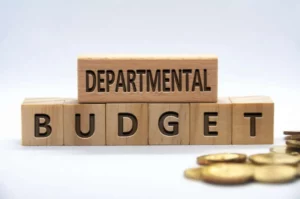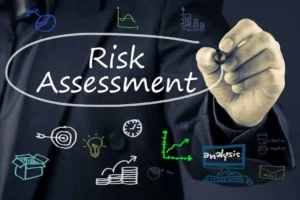Running a firm is rewarding but comes with its share of financial challenges. Controlling firm expenses, monitoring invoices, and ensuring a transparent cash flow may be difficult. Many of these complications might be solved if you understand what is a business credit card.
Such payment instruments may be utilized to cover main spending, including inventory, raw materials, and travel. They boost the purchasing power of firms while building up your credit. This blog post will cover how do business credit cards work, their strengths, and weaknesses.
Business Credit Cards Explained
This type of banking product is best suited for organizational spending instead of personal purchases. They are accessible to companies of any scale and help them form a credit rating, share business and individual spending, and obtain the optimal lending terms in the years to come.
Today, many financial institutions offer such payment tools. The application procedure is similar to that faced by individuals. Potential borrowers can provide an Employer Identification Number (EIN), which streamlines the procedures for small firms.
Once we have determined what is a business credit card, it is critical to understand that it typically offers less profitable interest rates compared to a traditional business loan. This is because such debts are unprotected, which boosts the risks of financial institutions. Some establishments adopt secured loans to firms with a restricted credit history.
Without EIN, firms may utilize an individual Social Security number. The financial institution will perform an underwriting research, considering all the data provided in the documents. Firms have credit reports, and they form a history, just like ordinary individuals. All EIN transactions are listed on the firm’s credit report.
Advantages of Business Credit Cards
In recent years, many firm owners have considered issuing such a payment instrument to support their core activity and drive its growth. Let’s examine the main business credit card benefits.
- Separation of individual and corporate finances. This will give you an accurate picture of your cash flow. If you utilize your savings to contribute to your firm’s initial spending, you will have to monitor your money closely. It will be easier to handle your balance sheet, including assets and obligations, if you have a single statement for your business loan. It will help you evaluate how things are going with your firm at a certain point and forecast future cash flow.
- Building a credit profile. Effective use of payment instruments helps to create a credit profile that is not tied to a personal loan. It enhances the firm’s access to financing, ensures optimal terms from suppliers, and boosts lenders’ confidence. If you make regular, timely payments and maintain low leverage ratios, your organization will demonstrate its creditworthiness and improve its ratings over time. This increases access to finance and instills confidence in potential investors, vendors, and partners, thereby driving the company’s growth.
- Rewards, perks, and purchase protection. These payment instruments offer incentives to attract corporate clients. They differ from the terms suggested to individuals. Some business credit cards suggest cashback for products and services that company representatives, such as logistics services, often choose. They have additional sign-up rewards, including a zero rate during the initial period of use. Firm representatives can also utilize travel benefits, including discounts on hotel stays. Modern payment solutions also offer purchase protection, including extensive warranties, purchase insurance, and fraud protection.
As we can see, business cards suggest simpler financial operations than other payment systems. They are accepted everywhere and may provide bonuses for spending that your firm must cover anyway. You may also easily add individual cards for your employees. When compared to debit cards, credit solutions offer additional protective measures, including extended warranties and fraud liability protection.
Drawbacks and Financial Considerations
While these payment tools offer numerous upsides, they also have downsides and potential complications. It is critical to be aware of all disadvantages and successfully eliminate them to boost profits and cut expenditures.
- Higher rates and fees. Business credit cards have higher interest rates, late fees, and annual commissions, making them an expensive method of funding your operations. The average interest rate on such a payment instrument is around 22%. This is more significant than other types of financing, including bank loans and overdrafts, which typically range from 7% to 10% at the low end.
- Impact on cash flow. Many firms rely heavily on lines of credit and debt to handle their cash flow. While a loan may offer a short-term boost, you may end up in a debt trap and face cash flow problems in the long term. Significant interest payments on loans, made every billing cycle, may greatly reduce a business’s net cash flow. Over time, this can lead to financial instability, restrict growth opportunities, and raise the risk of bankruptcy.
- Risk of misuse or poor tracking. Credit risks, including fraud, misuse, and overspending, may result from inadequate control. Fraudulent schemes can severely damage a firm’s financial position. A business loan may be misused without constant monitoring, resulting in significant financial losses.
One method to address credit card shortcomings is to educate specialists on how to use them properly, including approved expenditures, receipts, and document requirements. Taking these steps helps protect firms from being held responsible for illegal financial activity.
Bookkeeping Best Practices for Business Credit Cards
To ensure the successful use of business cards, it is crucial to set clear expectations and identify the cardholder’s responsibilities. Experts have created business credit card rules to promote effective management of these payment instruments.
- Categorizing expenses properly. Expense categorization is crucial to provide optimal financial management. It helps firms monitor where debt is going, make rational budgeting decisions, and implement cost-cutting measures. By categorizing spending, firms may define sectors of overspending or underspending. They can then adjust the budget to ensure optimal allocation. Additionally, categorization simplifies tax activities by providing an organized record of deductible expenditures.
- Reconciling statements monthly. Such a process involves reviewing and reconciling transactions on business credit card statements with your internal records. A receipt or invoice must support any movement of finances to ensure that expenditures are legitimate and that there are no violations of firm policy.
- Monitoring employee spending. Proactively manage routine employee spending by activating alerts and monitoring transaction history regularly, not just when reviewing monthly statements. This is especially true when we speak about startups and firms with minimal working capital. You can consult professionals to choose the best expense tracking tools and synchronize them with accounting software.
Accurately document expenditures from your credit card and any charges. We recommend keeping accurate records of all firm expenses, including receipts and invoices, to ensure correct tax filing and the ability to handle potential complications.
Business Credit Card vs. Personal Credit Card
Once we understand what is a business credit card, it is essential to recognize its key differences from a personal one. Business cards are issued for firms and offer a set of non-standard features. They have more significant limits and offer access to bonus programs and minimum rates, particularly for expenditures associated with travel and business activities. Such conditions are created to meet broader business goals, offering strategic advantages in cooperation with corporate finance.
Additionally, business credit cards are issued after analyzing the firm’s financial condition, including its cash flow and other indicators of stability. This distinguishes them from personal cards, which are issued based on the client’s income and experience of interaction with financial institutions.
Credit cards issued to small businesses typically require a personal guarantee from the cardholder, which creates personal liability for the owner. In other words, if the business can’t repay its debts, the owner is responsible for covering them. This may be relevant even when utilizing employee credit cards, and debts arise from the costs of specialists. Recall that in individual cards, the owner has exclusive responsibility for debts. Owners of firms that utilize such instruments for staff may select credit limits.
Primary Distinctions Between a Business Card and a Line of Credit
They both provide access to borrowed assets, but they vary in their structure and typical use.
A credit card is a type of revolving loan that enables you to pay them off over a set period, similar to an individual card. They often offer bonus programs, significant limits, and functions tailored to your objectives.
A business line of credit is a more flexible solution that allows you to get cash as needed, up to established restrictions. You cannot utilize such a line to pay for commodities or services directly; instead, you must transfer finances to a firm account. From there, you can complete a payment or withdraw it to a debit card.
The application procedure and eligibility requirements to deal with these types of financing also vary. Cards require a personal guarantee and a check, whereas a line requires a thorough financial background control and a comprehensive audit.
Final Words
Understanding what is a business credit card, and its intricacies is critical for firms of any size who want to enhance their financial operations. Analyze its strengths and weaknesses and compare them with other methods of obtaining financing to define the optimal solution that suits your needs.
BooksTime specialists assist in selecting and handling credit card bookkeeping, reconciliation, and spending monitoring. We will also tell you about other financial opportunities that may be accessible to you.


















